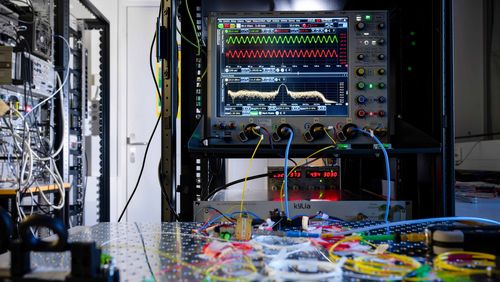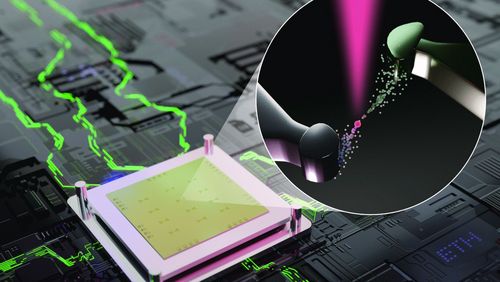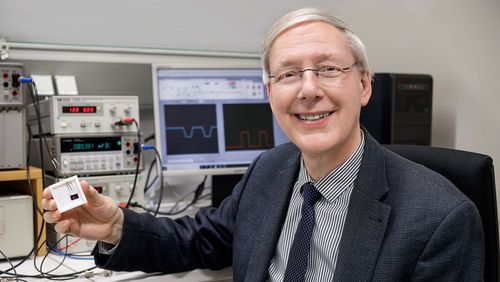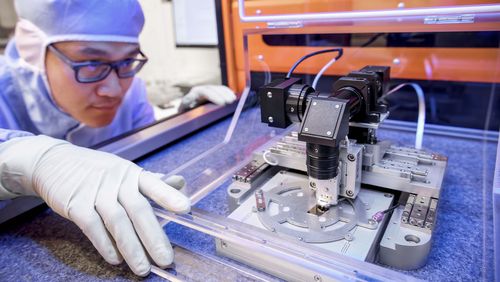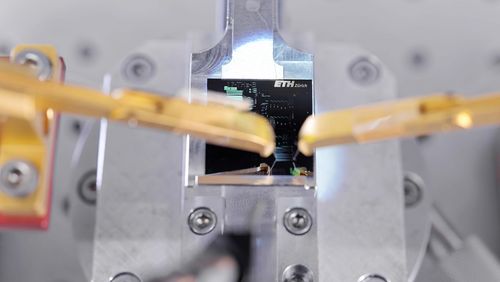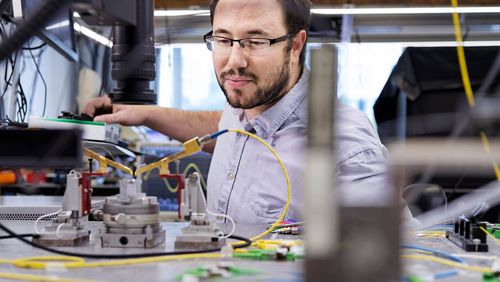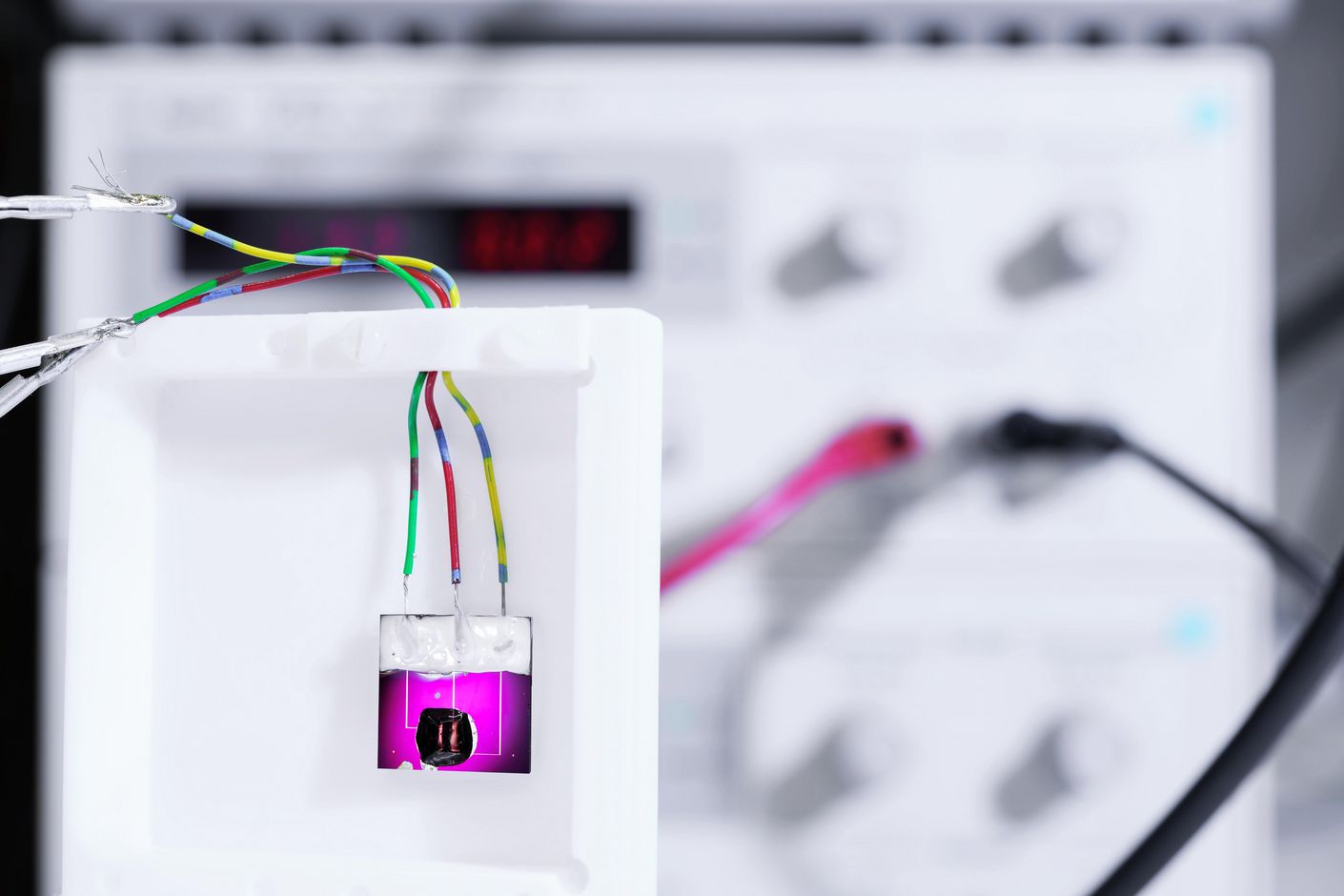
Record-breaking research
The miniature microchips of the future will function at the atomic level—and in their work to achieve the minuscule size-scale necessary, researchers at ETH Zurich and KIT in Karlsruhe have been busy setting records.
Boundaries are there to be tested. At least they are in the single-atom switch project, which the Werner Siemens Foundation has been funding since 2017. “This past year has shown that we haven’t yet reached the minimum physical limits of energy consumption in our switch,” says Jürg Leuthold, project leader and professor at ETH. In a first step, the project group led by Professor Thomas Schimmel at the Karlsruhe Institute of Technology (KIT) used tin electrodes to develop a transistor that switches on and off with a control voltage of just three millivolts, meaning it consumes some ten thousand times less energy than today’s conventional switches based on silicon semiconductor technology.
But no sooner had Schimmel’s group published an article on their record in July 2022 than they bested it: a few weeks later, the team reduced the control voltage by another factor of ten, down to 0.4 millivolts. Because the correlation between voltage and energy consumption is quadratic, energy consumption is reduced by a factor of one hundred: the new transistor is therefore a million times more energy efficient than today’s microchips—and it generates a million times less heat.
A mere fourteen picoseconds
Meanwhile, Leuthold’s group at ETH Zurich have set a different kind of record. Speed is an important metric for the single-atom switch, Leuthold explains: “The switches can be as small as you like—if they react sluggishly when turned on and off, no one will be interested.” Until now, the researchers did indeed fear this scenario, as the switching speeds in atomic switches are known to be much slower than in traditional microchips.
But not to worry: Leuthold and his team have reduced this value to a mere fourteen picoseconds. For clarity, that’s fourteen millionths of a millionth of a second. Leuthold says this tops the former world record for atomic switches and lies in the range of today’s silicon chips. In addition, he and his colleagues proved that the switch maintained its speed even after several dozen on-and-off cycles—and that resistance, hence the current, can be regulated. “Switching speed will no longer be a reason to rule out single-atom switches.”
Better components thanks to simulations
The team at the Center for Single Atom Electronics and Photonics have made remarkable advances in other areas as well. For instance, the researchers manufactured the first chip combining their single-atom switch with a traditional transistor; this experiment demonstrated that significant energy savings are already possible. And last but not least, the group led by ETH research partner Mathieu Luisier have taken an important step in their work on simulation models: they developed a platform on which the entire process of manufacturing the single-atom chip can be simulated—from the atomic-level structure to the completed component.
The simulations are crucial for better understanding the basic processes, says Leuthold, and they also show how the various components can be constructed to ensure the most reliable and energy-efficient functioning. The simulations also replace time-consuming and resource-intense tests, especially as researchers can otherwise easily spend several months building a new component after a “real-world” test has failed.
All in all, the prospects for a revolution on the electronics market are looking good, and Jürg Leuthold is now fairly certain that the new single-atom switch technology will one day replace silicon semiconductors as the standard technology.



